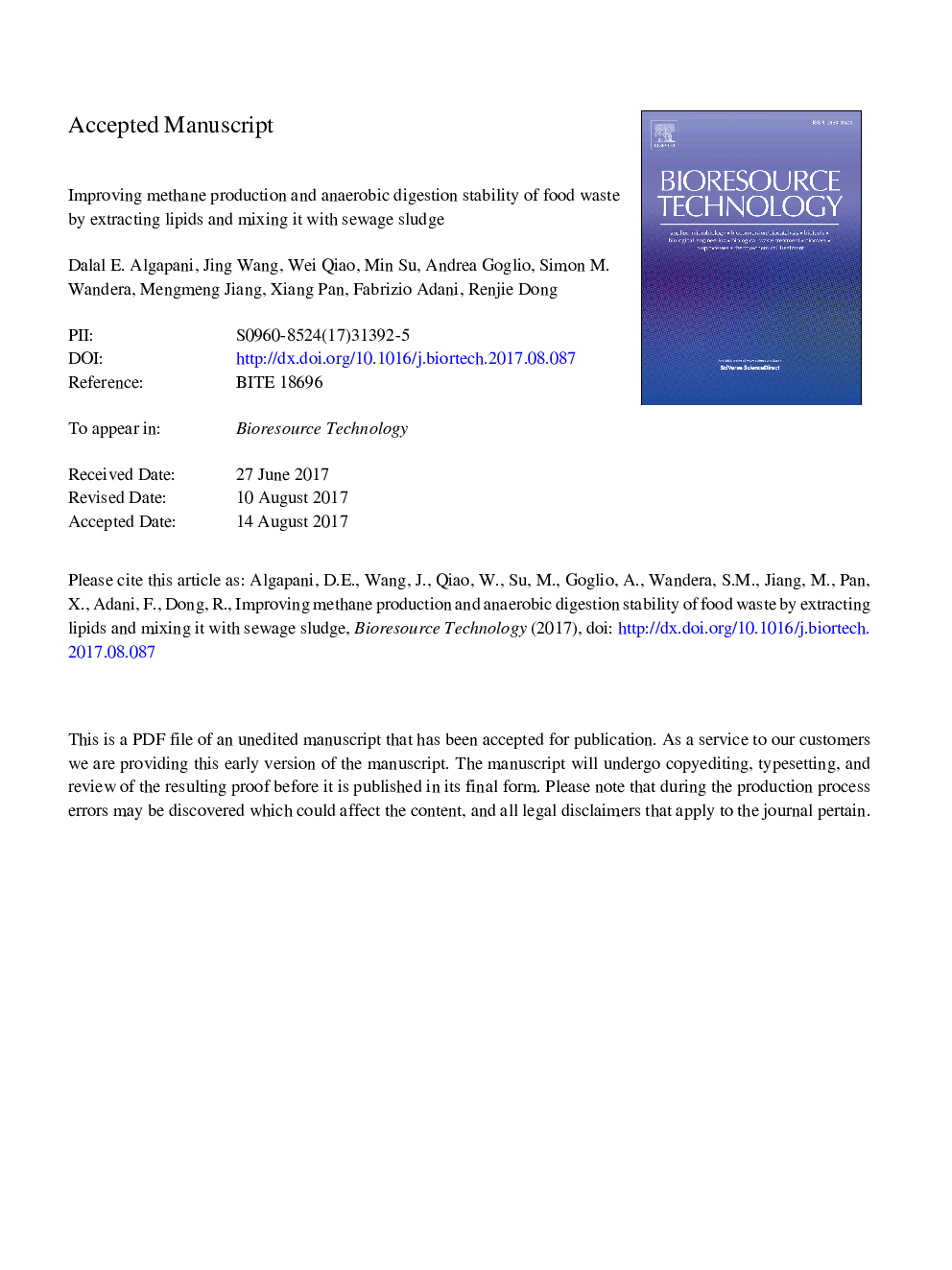| Article ID | Journal | Published Year | Pages | File Type |
|---|---|---|---|---|
| 4996562 | Bioresource Technology | 2017 | 29 Pages |
Abstract
Anaerobic digestion (AD) of FW shows instability due to both the presence of high lipids and accumulation of volatile fatty acids. In this study, AD of food waste (FW) was optimized by removing lipids (LRFW) and by co-digestion with sewage sludge (1:1 w/w on dry matter). The results obtained showed that lipids extraction increased FW methane yield from 400 to 418 mL-g VSaddedâ1 under mesophilic conditions (35 °C) and from 426 to 531 mL-g VSaddedâ1 in thermophilic conditions (55 °C). Two degradation phases (k1 and k2) described FW and LRFW degradation. In the thermophilic, LRFW-k1 (0.1591 dâ1) was slightly higher than that of FW (k1 of 0.1543 dâ1) and in the second stage FW-k2 of 0.0552 dâ1 was higher than that of LRFW (k2 of 0.0117 dâ1). The majority of LRFW was degraded in the first stage. FW and sewage sludge co-digestion reduced VFA accumulation, preventing media acidification and improving process stability.
Keywords
Related Topics
Physical Sciences and Engineering
Chemical Engineering
Process Chemistry and Technology
Authors
Dalal E. Algapani, Jing Wang, Wei Qiao, Min Su, Andrea Goglio, Simon M. Wandera, Mengmeng Jiang, Xiang Pan, Fabrizio Adani, Renjie Dong,
